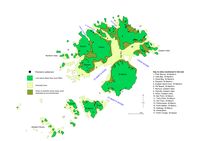
Figure 12: The location of prehistoric settlement and potential landing places on the Isles of Scilly (Source: Author).
As well as recognising these bays we can also identify potential landing places, and within the archipelago these are recognised through excluding areas of coastline where landing small boats would have been impossible or nearly so. Such places include steep and rocky shorelines and areas of coastline exposed to the prevailing wind, wave surges and strong current races. The resulting map, compiled here, clearly shows that only a limited number of places around the coastline of the islands would provide regular sheltered landing and harbour (Figure 12). However, where these ideal conditions may not be present, seafaring communities may have adapted to localised conditions through boat design, local knowledge and seamanship.
When we consider the distribution of settlement in relation to these landing places a correlation can be observed. One area of particular interest is the high density of settlement around Bar Point and its relationship to the remains of a sandbar linking together St Mary's and islands to the north of the archipelago. The placement of settlement within this locale provides access across this land bridge and close proximity to the sea within the bays to the east and west. These locales provide an ideal environment for the landing, launching and stowage of boats, as well as access to substantial areas of intertidal zone for hunting birds, the collection of shellfish and the placement of fish traps. Evidence for the presence of substantial areas of intertidal saltmarsh and sand dunes, and for their importance to prehistoric Scillonians, is demonstrated in the ancient pollen, plant macrofossil and animal bone record (Robinson 2007, appendices D–J).

Figure 12: The location of prehistoric settlement and potential landing places on the Isles of Scilly (Source: Author).
Smaller coastal inlets would also have occurred between Samson and Bryher and within Tresco Channel; these also show a strong relationship to settlement patterns (Figure 12). Towards the north of the islands, deep-water channels exist in Tean Sound and St Helen's Pool. Within this area, a patchwork landscape of islands, water channels and areas of intertidal sand flats would have occurred. Again, the pattern of settlement would suggest a close relationship to the coastline. This relationship is repeated at other smaller bays, namely: PorthCressa, Old Town, Porth Mellon, Toll's Porth, Porth Conger, Great Bay, Little Bay and Porth Morran.
The importance of landing places and safe harbourage would have been central to the day-to-day lives of prehistoric islanders who relied upon the sustenance provided by the sea for their survival. Evidence for the importance of the sea for prehistoric Scillonians is illustrated by the large quantities of fish and marine mammal bones found within prehistoric middens. Landing places may have been deeply symbolic locales, marking the transition between land and sea. Anthropological and historical studies from around the world show that landing and launching places are frequently invested with taboos, requiring the strict observance of appropriate ritualised behaviour (Astuti 1995; Cochrane and Tolston 2002; Coombe 1998; Kettula 2000; Munn 1986). Superstitions associated with harbours and landing places are not only restricted to the past, as many taboos are still prevalent today within British fishing ports (Gill 1996). Landing places are where interaction would occur between islanders and non-islanders, providing locales for cohesion, exchange and conflict. It was from these places that islanders would set to sea uncertain of safe return, and where landings reunited families and members of the island community. As such, landing places would have been highly significant to prehistoric Scillonians, as both practical and symbolic resources. The close relationship between settlements and landing places suggests on the one hand that access to the sea and its resources was significant, but also, like settlement locales, that these places had long biographies of use by generations of islanders (Robinson in press). These landing places would have been used by early colonisers of the archipelago and by all subsequent generations of islanders. It can be suggested the character of these places was fundamental to the selection of settlement locales and that the significance of these places pre-dates the construction of archaeologically detectable houses.
Internet Archaeology is an open access journal based in the Department of Archaeology, University of York. Except where otherwise noted, content from this work may be used under the terms of the Creative Commons Attribution 3.0 (CC BY) Unported licence, which permits unrestricted use, distribution, and reproduction in any medium, provided that attribution to the author(s), the title of the work, the Internet Archaeology journal and the relevant URL/DOI are given.
Terms and Conditions | Legal Statements | Privacy Policy | Cookies Policy | Citing Internet Archaeology
Internet Archaeology content is preserved for the long term with the Archaeology Data Service. Help sustain and support open access publication by donating to our Open Access Archaeology Fund.
File last updated: Fri May 31 2013